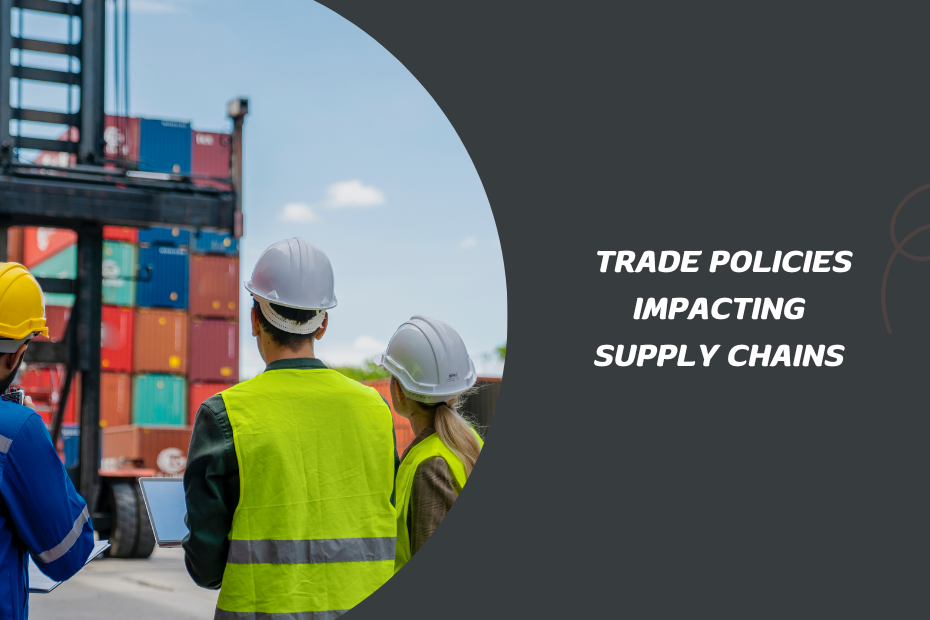Trade policies are constantly evolving, and they can significantly impact how global supply chains operate. Whether it’s the imposition of tariffs, new trade agreements, or geopolitical shifts, businesses need to stay adaptable to ensure their supply chains remain resilient and efficient. Based on industry insights and my own experience in logistics, here’s a comprehensive guide on how to navigate changes in trade policies and mitigate their impact on supply chains.
Stay Informed About Policy Changes and Trends
One of the first steps to navigating changes in trade policies is staying up to date on the latest developments. Governments regularly adjust tariffs, trade agreements, and regulatory frameworks, and these changes can directly affect supply chains. For example, recent increases in U.S. tariffs on certain Chinese goods have forced companies to seek alternative suppliers or absorb higher costs. Similarly, the European Union’s push for green energy has led to tariff reductions on renewable energy components, benefiting certain sectors while increasing competition for others.
By staying informed, companies can anticipate policy shifts and adjust their sourcing, production, and distribution strategies accordingly. This could involve subscribing to industry reports, attending trade policy forums, or leveraging government and private sector resources that track global trade trends.
Actionable Tip: Establish a dedicated team or hire external consultants who can regularly monitor policy updates in key markets and assess their potential impact on your supply chain.
Diversify Your Supply Chain
One of the key strategies for managing the impact of trade policy changes is diversifying your supply chain. Relying too heavily on suppliers from one country or region exposes your business to risks such as sudden tariff hikes or trade restrictions. A prime example of this was the shift in global supply chains due to U.S.-China trade tensions, which led many companies to relocate their production to alternative countries like Vietnam, Malaysia, and India.
By spreading your sourcing and manufacturing activities across multiple regions, you can mitigate the risks associated with any one country’s trade policies. This also applies to transport routes and methods—diversifying logistics operations ensures flexibility and resilience in the face of disruptions.
Actionable Tip: Identify potential alternative suppliers in different regions and establish relationships before any disruptions occur. This will allow for a smoother transition if policy changes affect your current suppliers.
Leverage Trade Agreements to Your Advantage
Trade agreements play a critical role in shaping global supply chains, as they govern the flow of goods between countries. Agreements like the United States-Mexico-Canada Agreement (USMCA) or the Asia-Pacific Economic Cooperation (APEC) Free Trade Agreement offer benefits such as reduced tariffs and streamlined customs processes, which can help businesses reduce costs and improve efficiency.
When new trade agreements are introduced, they often present opportunities to expand into new markets or reduce costs by sourcing goods from partner countries. Staying informed about these agreements and understanding their implications can provide a competitive edge.
Actionable Tip: Evaluate how existing and upcoming trade agreements can benefit your business. Look into tariff reductions, new markets, or improved access to raw materials that these agreements may offer.
Implement Advanced Technology for Better Visibility
Changes in trade policies can introduce unpredictability into global supply chains, but advanced technologies such as artificial intelligence (AI), blockchain, and Internet of Things (IoT) can help businesses navigate these complexities. AI and predictive analytics can identify potential risks, allowing companies to respond proactively to policy changes or supply chain disruptions.
Blockchain technology enhances transparency by creating tamper-proof records, which is especially valuable for tracking goods in industries with complex supply chains, such as automotive or pharmaceuticals. Moreover, IoT devices can provide real-time monitoring of shipments, enabling companies to reroute products efficiently in response to policy changes or other disruptions.
Actionable Tip: Invest in technology platforms that offer predictive analytics and real-time monitoring, ensuring that your supply chain remains agile and adaptable to policy changes.
Optimize for Sustainability to Align with Policy Trends
As governments and international bodies push for more sustainable practices, trade policies are increasingly incorporating environmental, social, and governance (ESG) considerations. For example, the EU’s Carbon Border Adjustment Mechanism (CBAM) imposes costs on imports from countries with weaker environmental standards, encouraging businesses to source from regions with stricter regulations.
By embracing sustainable practices, businesses align with emerging trade policies and enhance their brand reputation and reduce long-term risks. Sustainable sourcing, green logistics, and reducing carbon emissions are becoming integral parts of global trade strategies.
Actionable Tip: Conduct a sustainability audit of your supply chain and explore opportunities to reduce emissions, minimize waste, and source materials from environmentally responsible suppliers.
Develop Contingency Plans and Risk Mitigation Strategies
Given the unpredictability of global trade policies, it’s essential to have contingency plans in place. These plans should cover scenarios like tariff hikes, trade restrictions, and geopolitical disruptions, and outline alternative strategies for sourcing, manufacturing, and logistics.
For example, nearshoring—moving production closer to home markets—has gained traction as a way to reduce dependency on offshore suppliers. Similarly, having backup suppliers in different regions can help maintain continuity if trade barriers arise.
Actionable Tip: Regularly update your contingency plans and run scenario analysis to ensure your business is prepared for sudden policy shifts or disruptions.
What are the best ways to navigate changes in trade policies impacting supply chains?
- Stay informed about policy changes through industry updates.
- Diversify your supply chain across multiple regions.
- Leverage benefits from new trade agreements.
- Use advanced technologies for supply chain visibility.
- Align supply chains with sustainability policies.
- Develop contingency plans to mitigate risks.
Conclusion: Adapting to a Changing Trade Environment
Navigating the complexities of changing trade policies requires a proactive and adaptive approach. By staying informed, diversifying supply chains, leveraging technology, and aligning with sustainability trends, businesses can remain resilient and competitive. In my experience, those that anticipate changes and invest in flexible, tech-driven solutions will thrive, even as trade policies continue to evolve.

